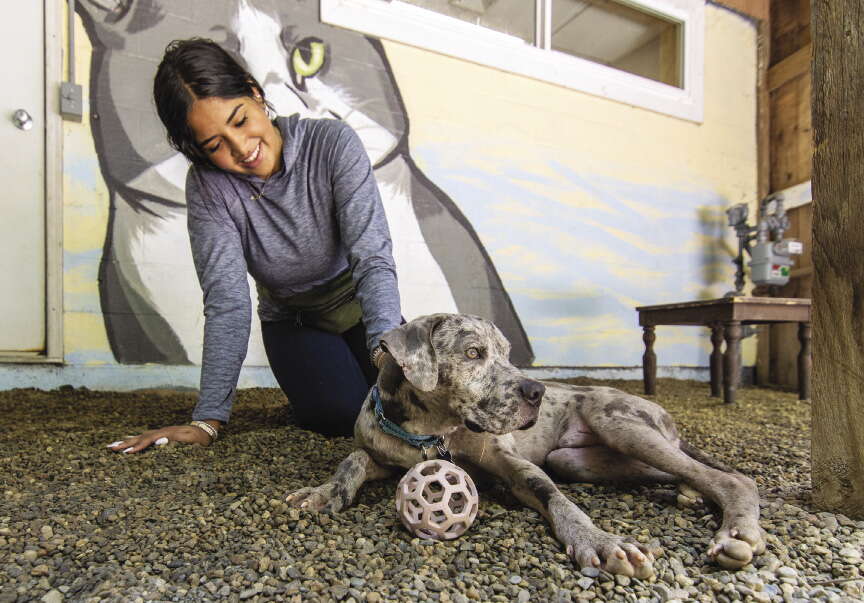
Ruff times: Rising costs of living and petcare are forcing shelters to adapt to an increase in pets needing a home
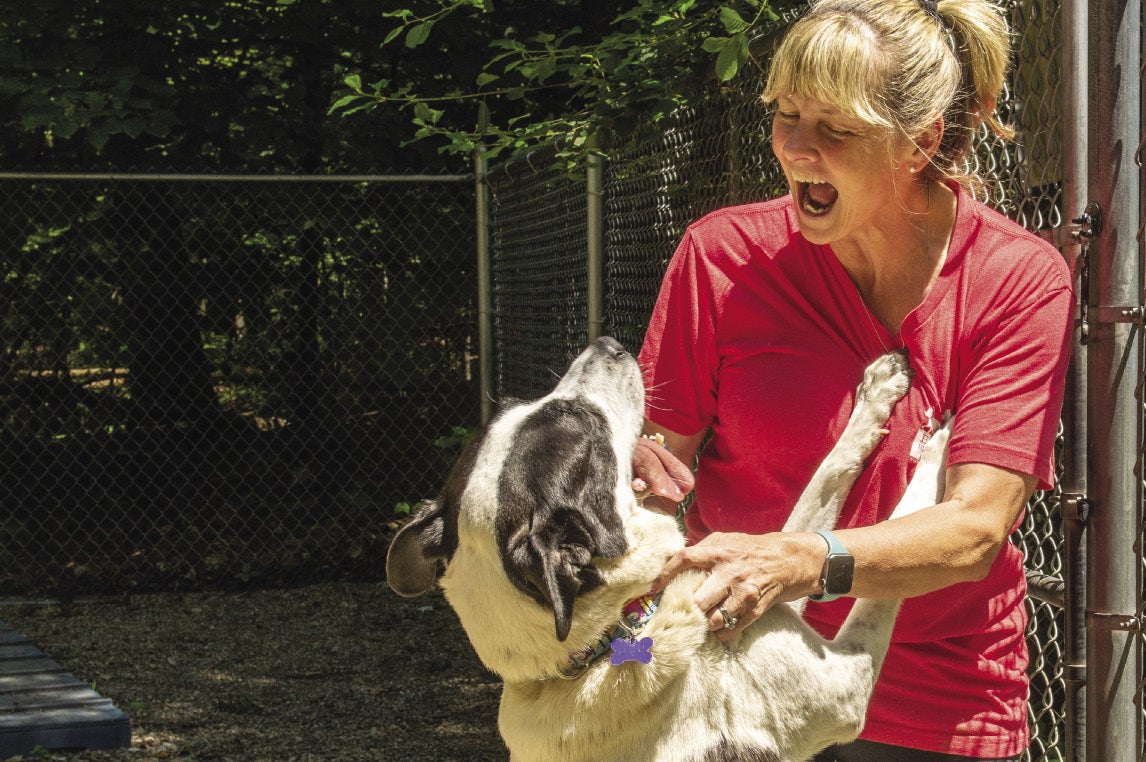 Photo | EDD COTE
Cleo, a seven-year old, mixed-breed dog, (pictured with Volunteer Coordinator Kathy Lundgren) has been at Baypath Humane in Hopkinton for nearly a year, as the shelter works to build a new facility amid high demand for shelter space.
Photo | EDD COTE
Cleo, a seven-year old, mixed-breed dog, (pictured with Volunteer Coordinator Kathy Lundgren) has been at Baypath Humane in Hopkinton for nearly a year, as the shelter works to build a new facility amid high demand for shelter space.
No longer regulated to a dog house on the edge of the lawn, pets are playing a bigger role in American families than ever before, taking center stage in holiday cards and on their own social media accounts.
But the increasing number of people who have adopted dogs or cats, particularly since the COVID-19 pandemic, have been faced with increased costs of living, housing-related challenges, and the skyrocketing cost of pet supplies and care.
With challenges for current and prospective pet owners mounting, Central Massachusetts animal shelters are feeling the crunch, with some suspending new intakes amid a pressing need for space.
Already working from a tiny facility for decades, the nonprofit Baypath Humane Society of Hopkinton is constructing a new larger and modern shelter. Baypath’s expansion couldn’t come at a better time, said Anne Lindsay, founder and president of the Massachusetts Animal Coalition, as shelters wrestle with an unprecedented number of pets.
“It’s definitely been a tough time now for a bunch of reasons,” Lindsay said. “We’re all living it and experiencing it.”
A new level of need
About 49.4% households in Massachusetts included a pet in 2016, according to data from American Veterinary Medical Association, up from the 31% shown in a 1996 study conducted for the Massachusetts Society for the Prevention of Cruelty to Animals. This was before the 20% surge in adoptions during the peak of the COVID-19 pandemic.

This mirrors national data, with 89.7 million dogs and 73.8 million cats in households in 2024, versus 52.9 million dogs and 59.8 million cats in 1996.
With intakes also dropping as a result of the pandemic, shelters were seeing their kennels emptied out in the early 2020s. Flash forward to 2025, Central Massachusetts animal nonprofits now are struggling to keep up with the number of pets in need of a home.
The Worcester Animal Rescue League suspended new intakes in the fall of 2024 after Massachusetts Department of Agricultural Resources made a recommendation the shelter stop taking in animals, as it worked to address overcrowding and other facility issues. The Shelter announced on June 25 it would resume intakes in early July after initiating a partnership with MSPCA-Angell.
“There are persistent challenges facing animal welfare right now,” Mike Keiley, vice president of the MSPCA-Angell’s Animal Protection Division, said in a June 25 press release announcing the resumption. “We’re dealing with widespread staffing shortages in shelters, clinics, and veterinary hospitals, not to mention a slowdown in adoptions—especially of larger dogs—that’s led to huge capacity problems. WARL is the main resource for animals in need in the second largest city in Massachusetts, so it’s not hard to see how they ended up in this situation."
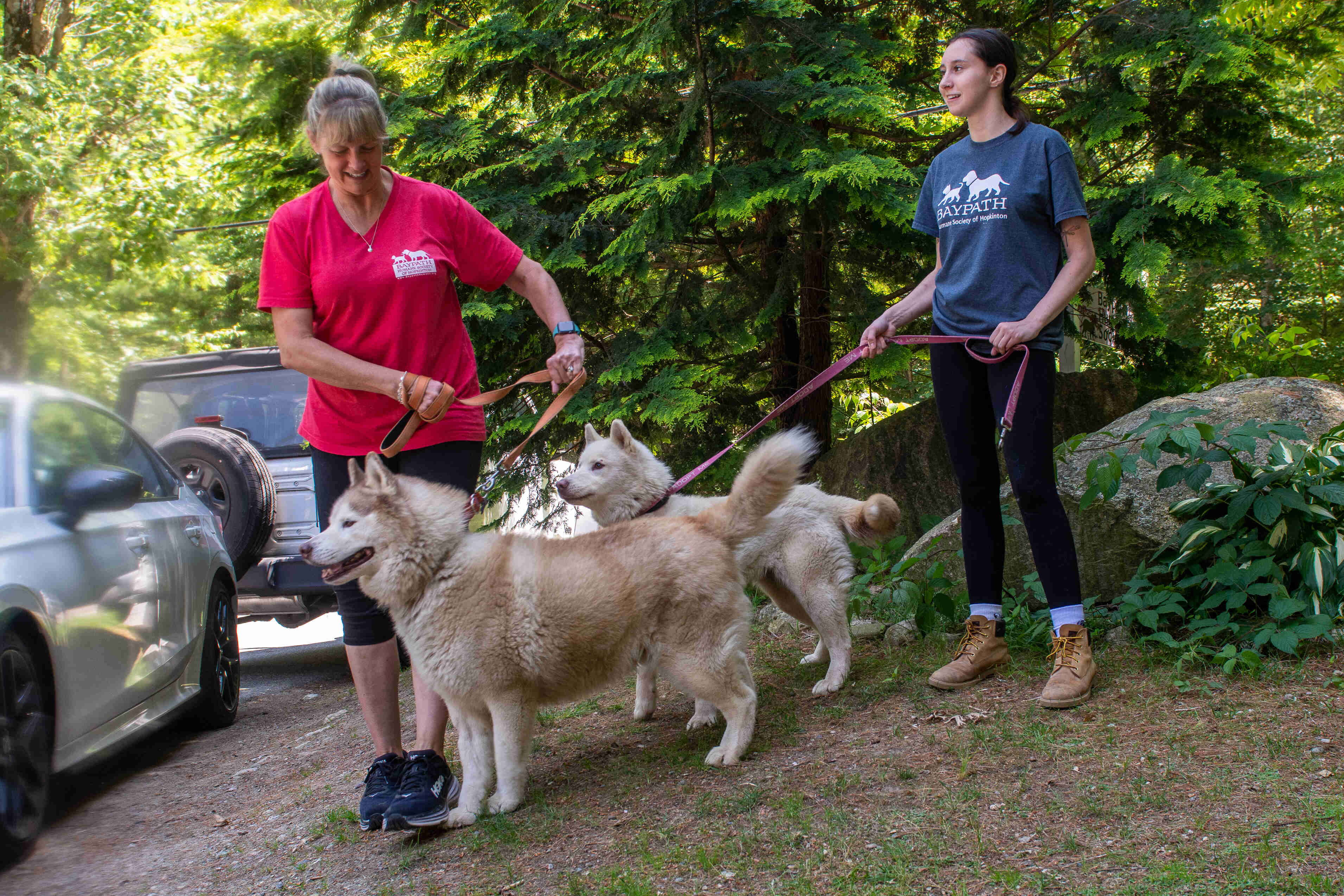
The issues impacting WARL's are being felt across Central Massachusetts, according to Lindsay.
“Shelters are saying they’re dealing with distribution problems, backlog problems, and funding issues,” Lindsay said. “With a shelter like Baypath, I call them the little engine that could, because I don't know how they do it, but they keep turning along.”
While a narrative has emerged saying people can no longer handle the realities of post-pandemic pet ownership, the reality is much more complex, said Lindsay. Pet owners have wrestled with the higher costs of living, struggles to find and maintain pet-friendly housing, and the surging price of animal care.
Baypath has dealt with a steady stream of pet owners who are reluctantly relinquishing their cats and dogs, not because of a lack of time, but because of a lack of money or housing.
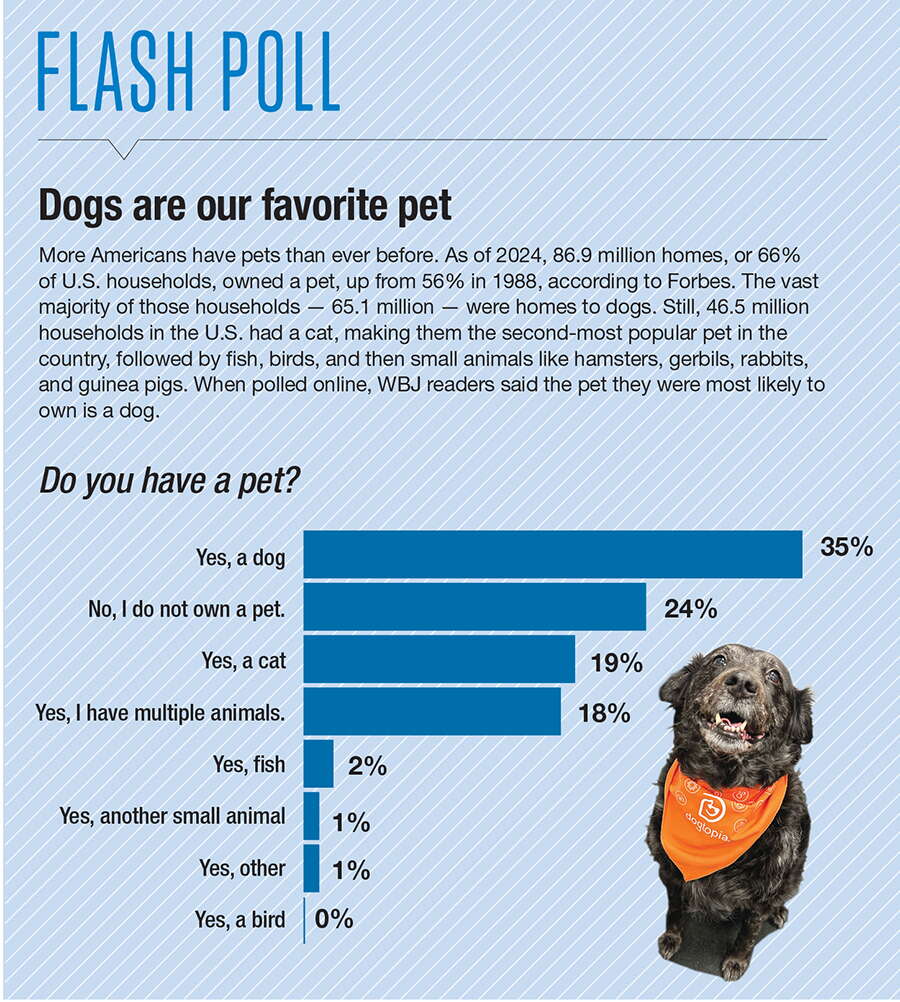
“There's the narrative that a lot of people brought their pets back after COVID,” said Liz Jefferis, executive director of Baypath Humane Society of Hopkinton. “We don’t see a lot of that. What we're seeing is ‘I lost my home,’ or ‘I can't afford my medical care,’ or ‘I can't afford my pet's medical care.’”
During the pandemic, Baypath was accepting a majority of their animals from out of state, but the majority of the dogs and cats in the shelters now are locals. Baypath had 42 cats and 33 dogs listed for adoption on its website as of June 19, a stark difference from COVID.
The rise of Big Vet
As technology and treatments have improved over the past few decades, pet owners have more options than euthanization, once the only potential outcome for many pet health issues.
Increased levels of care comes with increased costs. A March whitepaper from Vetsource, a business solution platform for veterinary practices, found veterinary visits decreased 2.3% in 2024 compared to 2023, as owners struggled with an 8% increase in veterinary cost, 1.6 times the national inflation rate.
For households with dogs, annual vet costs climbed 60% from 2020 to 2022, from $224 to $362, according to Global Market Insights data. For cat households, those costs increased 70%, from $189 to $321.
With costs increasing, a Gallup survey in May showed 52% of pet owners in the U.S. report having skipped needed veterinary care in the past year, with about 3 out of 4 households making less than $60,000 citing affordability.
“The economic growth and consumer pressures just seem like they are lining up to enter a weaker economic phase and that will impact veterinary visit data pretty significantly for 2025,” Katelyn McCullock, American Veterinary Medical Association chief economist, said in an October blog post published by the organization. “How long that lasts, I think is anyone’s guess, but we’ll have to just keep monitoring that data.”
In addition to rising costs due to improved treatment technology, consolidation and the influence of private equity acquisitions of longtime small veterinary clinics is playing a role.
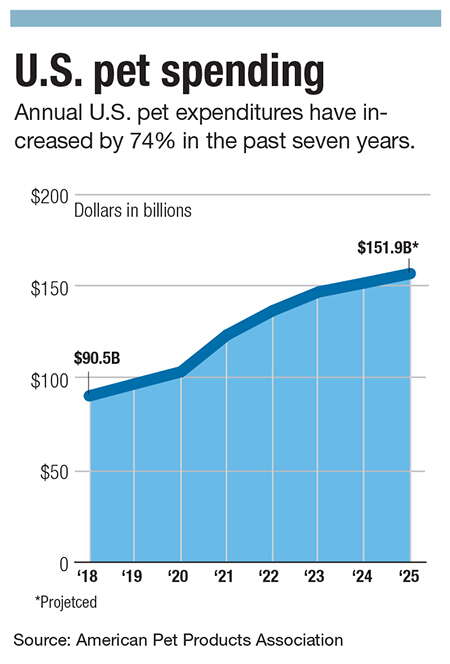
Realizing the vet space is an industry with a higher-than-average rate of return on investment, private equity invested $51.6 billion into the sector from 2017 to 2023, and another $9.3 billion in the first four months of 2024, according to an April 2024 article published in The Atlantic. This means what was once a locally-owned clinic may actually be controlled by a large investment group.
Lindsay is married to a retired veterinarian who sold his practice to a firm she said maintained his previous level of care and thoughtfulness, but she’s heard not all clinics are so lucky.
“The complaints I'm hearing from people is they went in for one thing and walked out having had all of these x-rays or blood tests done,” she said. “So there's kind of an upsell. … going on with some of the corporate veterinary hospitals.”
Families are now spending more on basics like pet food, too. Annual spending on pet food is in the range of $655-$1,905 in 2025, according to the Rover True Cost of Pet Parenthood Report, up from $200-$1,000 in 2020.
A comprehensive shelter crisis
While rising costs play a role in the shelter crisis, larger economic and societal forces have a role, too, said Lindsay.
“We have a veterinary shortage, and then, on top of that, housing issues,” she said. “That’s a big thing that people aren't talking about.”
People aren’t just losing their housing due to eviction or rent increases, as sometimes it's simply a landlord wants to redevelop, and the resident can’t find a new place allowing their specific type of pet or breed, she said.
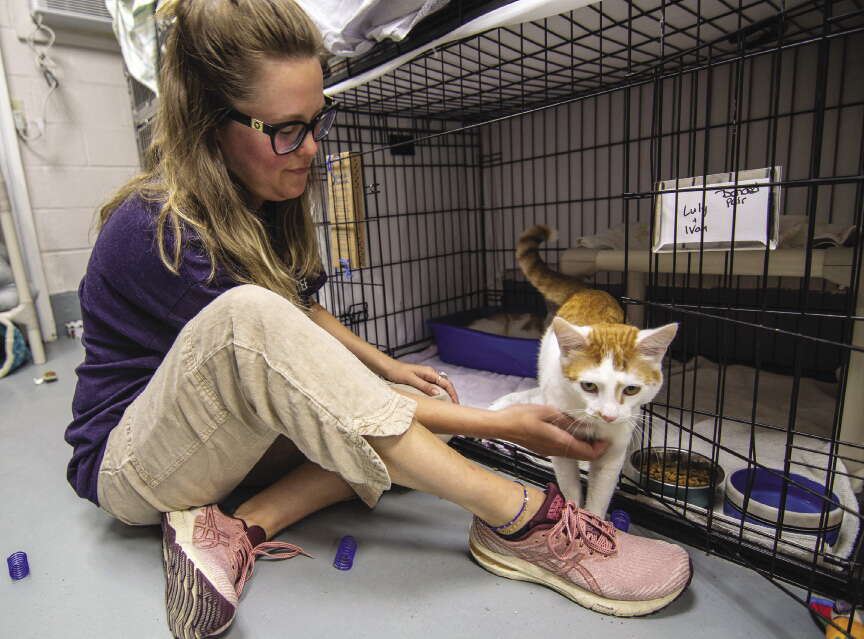
Divorces and family issues are a common cause of pets being surrendered, according to ASPCA. Pet behavioral issues remain one top factor in surrenders.
Both Lindsay and Jefferis have seen what they perceive to be an increase in animal hoarding, where shelters find themselves scrambling to react to the discovery of a home with dozens of animals.
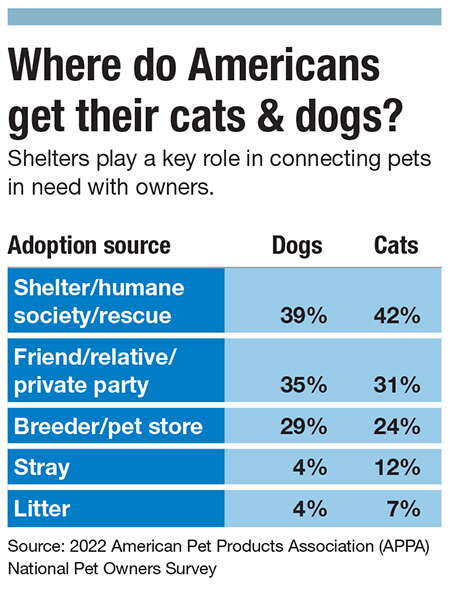
In June, Second Chance Animal Services in East Brookfield took in 52 cats surrendered by what the nonprofit called a well-intentioned but overwhelmed local resident.
“With this many cats, the medical care quickly adds up,” Lindsay Doray, chief development officer at Second Chance, said in a June 17 press release. “In addition to 52 spay and neuter surgeries, these cats require hundreds of vaccines, two weeks of medication for upper respiratory infections, and specialized care for underweight and pregnant cats. They also need foster care, food, litter, and daily staff support.”
The shelter estimated the cost of care for the surrendered cats to be $18,000, urging locals to lend their support.
Eating the walls
When a group of pet lovers gathered 38 years ago to construct an animal shelter in Hopkinton, they assumed the approximately 2,400-square-foot structure would serve as a temporary upgrade from the trailers they had used.
“Our building was built in 1987 by volunteers,” Jefferis of Baypath Humane said. “Some of them are still around, and they're funny because they're like ‘We never thought this place would still be going.’”
Baypath has found homes for 25,000+ animals since its founding in 1977, but after decades of doing everything to maximize its space, it’s now working toward building a 8,200-square-foot shelter building, allowing for a higher level of care to a greater number of animals.
Having secured a 50-year lease for a five-acre parcel of land owned by the Town of Hopkinton and raised $5.1 million toward an ongoing campaign goal of $6.5 million, Baypath plans to begin construction this year.
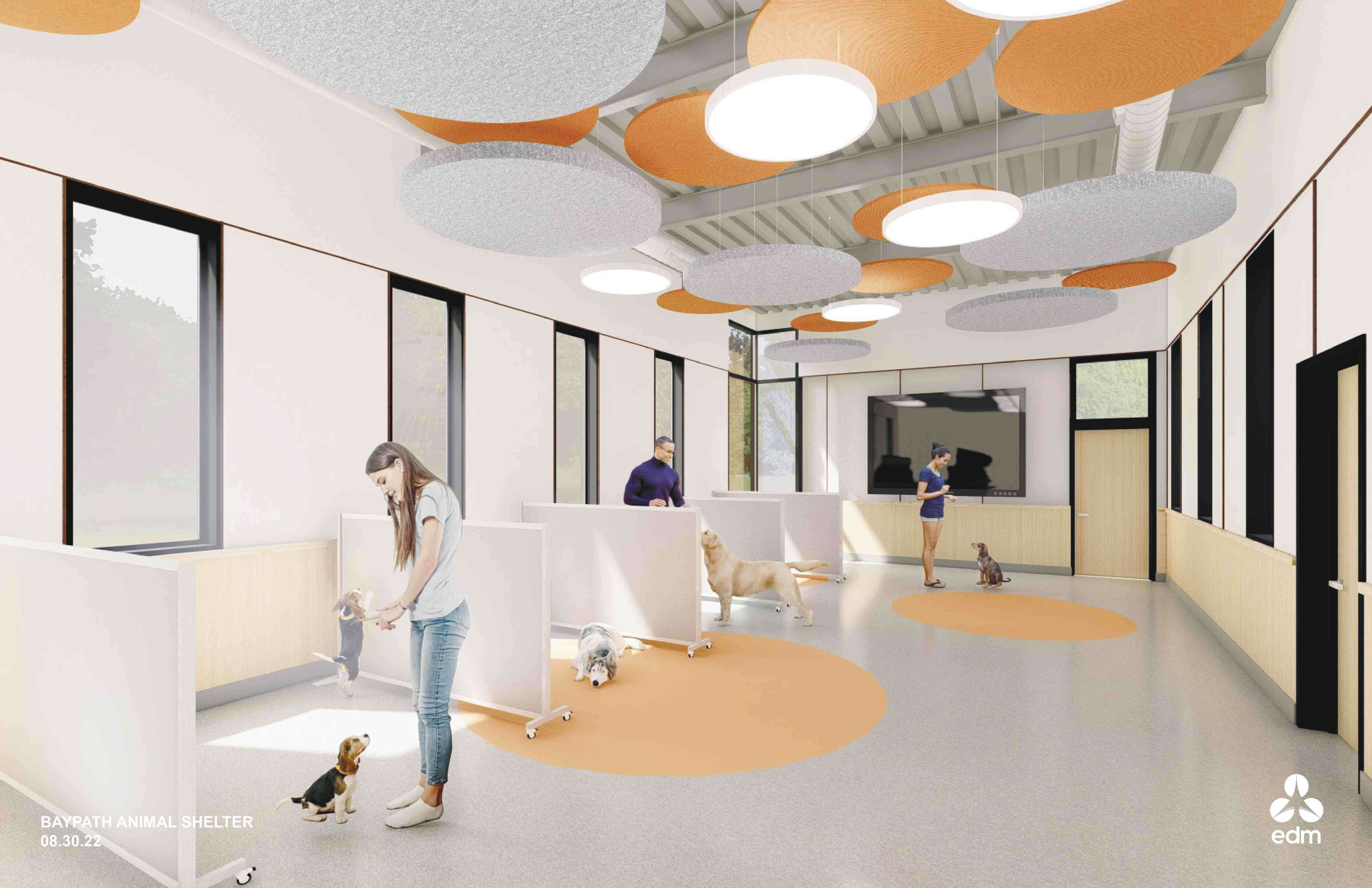
The new space will contain more separation for cats and dogs, modern equipment, and better air quality control, a key aspect of keeping shelter pets healthy, said Jefferis. The building will provide more space for Baypath’s 200+ volunteers, who contributed 14,200 hours of time in 2023.
Baypath’s current facility has “nowhere for the staff to have lunch,” Jefferis said. “The new building, in a very expensive time, is still modest. We won’t have a lunch room, but we'll have room for a minifridge so staff can put their lunches somewhere. We're not building a resort, but it will be a little bit more of a respectable space for all the people that care for the animals.”
Building out a new shelter space falls behind only hospitals and prisons in terms of cost, she said.
“You need really good plumbing because, you know, they're animals,” she said. “You need really good HVAC systems. It’s a very expensive endeavor. My friend runs a food pantry in town, but ostensibly, the volunteers there aren't trying to eat the wall. But at our place, our animals are.”
Baypath still needs community support, she said, whether it be through donations, adoption, or serving as a foster family. She pointed to Cleo, an energetic, seven-year-old, mixed-breed female at Baypath, as the perfect example of the type of loving pet obtainable through adoption.
“Cleo has been at Baypath for almost a year now, and she needs attention,” Lindsay said.
EDITOR'S NOTE: This article has been updated from a version published in the June 30 print edition of WBJ to reflect the pending resumption of intakes at Worcester Animal Rescue League.
Eric Casey is the managing editor at Worcester Business Journal, who primarily covers the manufacturing and real estate industries.









0 Comments